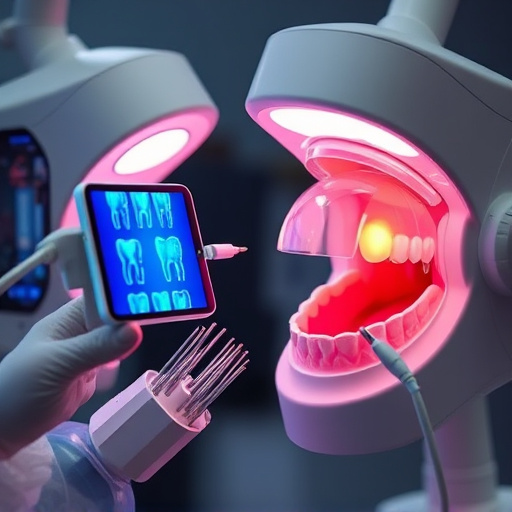TMJ disorder treatment gains importance due to its growing prevalence and daily life impact. Causes include dental misalignments, trauma, stress, arthritis, and bruxism. Early intervention through preventive dentistry is key. Non-invasive treatments like restorative dentistry and clear aligner therapy offer discreet, effective relief with faster recovery times. Surgery is reserved for severe cases, addressing structural issues with procedures like arthroscopy, leading to improved quality of life and oral health.
Discover effective solutions for managing TMJ disorder (TMD) with proven patient success stories. This comprehensive guide explores both non-invasive treatments and surgical interventions, shedding light on how individuals have found relief from this often debilitating condition. Understanding the causes and symptoms of TMD is the first step towards finding the right treatment plan. Learn which therapies have yielded positive outcomes for countless patients, empowering you to make informed decisions about your dental health.
- Understanding TMJ Disorder: Causes and Symptoms
- Non-Invasive Treatments Showcasing Patient Success
- Surgical Interventions: When Needed and Results
Understanding TMJ Disorder: Causes and Symptoms

TMJ disorder treatment has become a focus of attention due to its growing prevalence and impact on patients’ quality of life. TMJ, or temporomandibular joint, is the complex joint that connects your jawbone to your skull. Disorders affecting this joint can lead to a range of symptoms, from mild discomfort to severe pain and disability. Understanding what causes these disorders is crucial in developing effective treatment strategies.
The onset of TMJ disorder can be attributed to various factors, including dental misalignments, trauma to the face or head, stress, arthritis, and grinding or clenching teeth (bruxism). Patients often experience symptoms like jaw clicking or popping, difficulty opening or closing the mouth, pain in the jaw, temples, or ears, and even headaches. Over time, these issues can escalate, requiring urgent dental care, such as emergency dental fillings, to alleviate immediate discomfort. Preventive dentistry plays a vital role in managing TMJ disorder by addressing potential causes early on, thus avoiding more complex treatments.
Non-Invasive Treatments Showcasing Patient Success

Many patients suffering from TMJ disorder (TMD) find relief through non-invasive treatments, offering a ray of hope for those seeking effective solutions. These methods, often considered less drastic than surgical interventions, have proven successful in managing symptoms and improving quality of life. One such approach is restorative dentistry, which focuses on realigning the jaw and restoring proper bite alignment. This can be achieved through various means, including clear aligners, known for their discreetness and comfort.
Patient success stories highlight the effectiveness of these non-invasive strategies. Many individuals have reported significant reductions in pain, popping sounds, and facial tenderness after undergoing restorative dentistry treatments. Emergency dental care is not always required, as these conservative methods allow for gradual correction of jaw misalignments, ensuring patients experience less discomfort and faster recovery times compared to more aggressive interventions.
Surgical Interventions: When Needed and Results

Surgical interventions are considered a last resort for TMJ disorder treatment, typically reserved for severe cases where non-surgical methods have proven ineffective. These procedures aim to correct structural issues within the temporomandibular joint, addressing problems such as disc displacement or bone misalignments. One common surgical approach involves arthroscopy, where tiny incisions are made to insert a camera and specialized tools, allowing dentists to precisely visualize and rectify joint abnormalities.
Successful TMJ disorder treatment through surgery can lead to remarkable improvements in patients’ quality of life. Post-operative care often includes restorative dentistry procedures like dental crowns to restore teeth affected by the condition. Many patients report reduced pain, improved jaw function, and enhanced overall oral health after these interventions, showcasing the potential for surgical treatments to provide long-lasting relief.
TMJ disorder treatment has evolved, offering a range of options from non-invasive therapies to surgical interventions. As evidenced by numerous patient success stories, these treatments can significantly alleviate symptoms and improve quality of life. Understanding the causes and symptoms is key to selecting the most effective approach, whether it be conservative management or surgery. With dedicated care, individuals suffering from TMJ disorder can find lasting relief and regain control over their daily lives.














